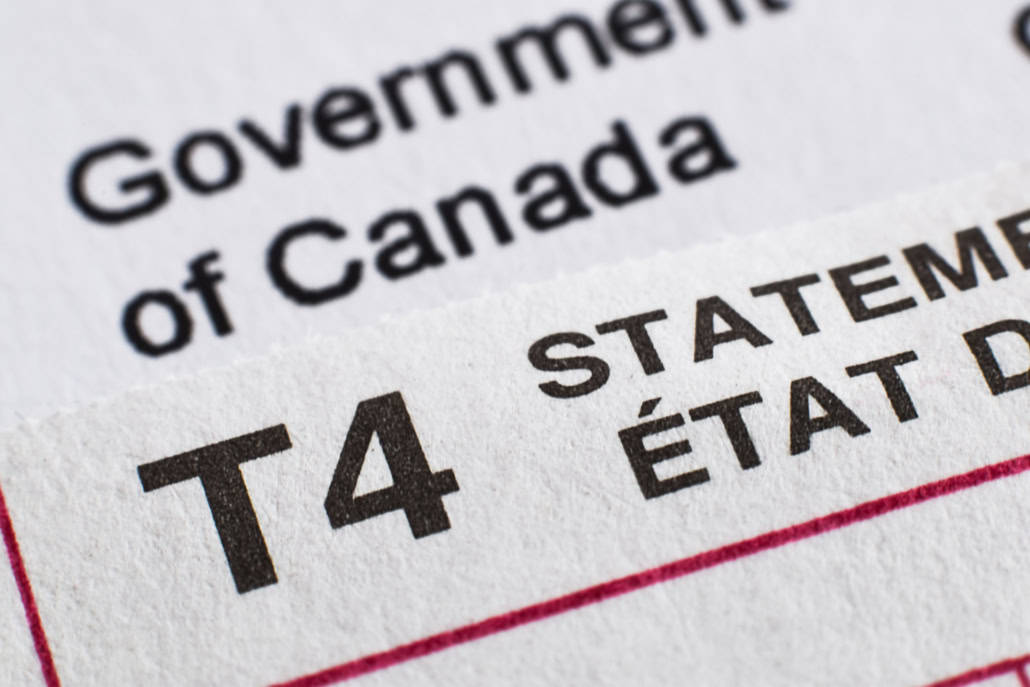September tax news: Why you can be liable for a family member’s tax debts–and much more

YOU CAN BE LIABLE FOR A FAMILY MEMBER’S TAX DEBTS!
There Beware of getting money, gifts or transfers of property from a family member, including your spouse, if that person owes (or might possibly owe) any money to the Canada Revenue Agency (CRA), for either income tax or GST/HST.
The CRA has the ability to trace property or money that is transferred to anyone with whom the debtor does not deal “at arm’s length” — which includes any close family member (and depending on the circumstances can also include friends).
If a tax debtor transfers money or property (e.g., cash or the family home) to you, during a year in which, or for which, the debtor owes money to the CRA, or during any later year, the government can assess you under section 160 of the Income Tax Act for the net value of what you have received. (The same general rule applies under section 325 of the Excise Tax Act for any unremitted GST or HST the tax debtor may owe.)
The debt to the CRA could arise in various ways, such as:
- the debtor’s own income tax
- a failure to remit payroll withholdings (source deductions) or GST/HST collected by a person carrying on business
- a director’s assessment for the failure of a corporation to remit source deductions or GST/HST.
Example
Richard and Linda jointly own their home, which is worth $200,000 and is mortgage-free. In September 2023, Richard transfers his half-interest in the home to Linda, so that she now owns all of it.
Richard is a director of a corporation with a December 31 year-end. In November 2023, the business starts running into financial trouble, and it uses $130,000 in employee source deductions and GST/HST collections to pay creditors rather than remitting the funds to the CRA. Eventually the corporation goes bankrupt, leaving a trail of unpaid creditors including the CRA.
The CRA will be able to assess Richard for $130,000, as a director of the corporation, for the unremitted source deductions and GST. To escape liability he will normally have to show that he “exercised the care, diligence and skill that a reasonably prudent person would in comparable circumstances” (the “due diligence” defence).
Suppose Richard is found liable, but he has no assets to pay the $130,000?
The CRA can assess Linda under section 160 for $100,000 — the value of what Richard transferred to her, since the transfer took place during the same year. She will be personally liable for this amount, and if she has no other assets, the CRA will register a lien against the home (and could even force it to be sold).
Richard has thus made things much worse by transferring the house to Linda. All of her assets are now subject to seizure, not just the home.
Linda can be assessed at any time — even 5, 10 or 20 years after Richard’s liability arose. There is no limitation period on this assessment.
As noted above, the transfer need not be to a spouse to be caught. Transfers to other family members will fall into the net. So can transfers from a corporation to a shareholder.
Here are some other examples of cases where this rule has been held by the Courts to apply — some of them surprising:
- David and Diane live in a home that is registered in Diane’s name (and has been for years). David is the sole income earner in the family. David makes all the mortgage payments on the home. He is reassessed for income tax of an earlier year.
The mortgage payments can be considered a transfer of money from David to Diane, so Diane can be assessed for David’s tax debts. (Some court cases have allowed a reduction for the value of the free rent David has received from Diane, but others have not.) If she doesn’t have any money, the CRA may put a lien on her home.
- Mary is the sole shareholder of MaryCo, a small business corporation. MaryCo pays a $20,000 dividend to Mary. MaryCo ends up without enough money to pay its $15,000 tax owing for the year. The CRA tries to collect the debt from MaryCo but is unable to.
The CRA can assess Mary for the transfer of property from the company by way of dividend. Mary will likely be liable for $15,000 — even though she has already paid income tax on the $15,000 dividend! (The Courts have held that this total tax of about 130%-150% is valid.)
- Len is a majority shareholder of LenCorp, a corporation. Len owes $10,000 to Karen from a personal loan. Len arranges for LenCorp to pay $10,000 to Karen to pay off Len’s debt. LenCorp is then unable to pay its income tax or make its GST remittances for the year.
The CRA can assess Len for up to $10,000 of LenCorp’s tax debts. The payment to Len’s creditor (Karen) is considered to be a transfer of money to Len. (It will also be taxable to Len as a $10,000 shareholder benefit.)
- Keith leaves Canada and moves to the Bahamas with unpaid tax debts. The CRA cannot enforce its claim because he is outside Canadian jurisdiction, though they periodically contact him to ask him to pay. Twenty years later he dies, leaving money to his children, who still live in Canada. The CRA can assess the children to collect the ancient debt owing by Keith, plus 20 years’ interest — perhaps seizing their entire inheritance.
- Sally pays for her daughter’s wedding, at a time when she has a large debt to the CRA. Her daughter will be assessed for the amount Sally paid towards the wedding.
Exceptions
There are some exceptions to the “tracing” rule in section 160.
First, the rule does not apply to the extent the transferor receives consideration for the property transferred. Thus, in the first example above, if Linda had paid Richard $30,000 for the $100,000 interest in the home that he transferred to her (or if the transfer paid off a previous loan of $30,000 Linda had made to Richard), then the CRA would only be able to assess Linda for $70,000 — the net value of what he transferred.
Second, the rule generally does not apply to a transfer on marriage breakdown, if the transfer takes place under the terms of a court order (e.g., a divorce decree) or a written separation agreement. Thus, if Richard transferred his interest in the house to Linda because they had separated or were divorcing, the CRA might not be able to assess Linda. These rules apply to common-law partnerships as well as legal marriages.
Be Careful!
CRA collections officers will actively pursue transfers by delinquent taxpayers. For example, they will search real estate transfer records, banking records and other sources to find transferees that can be assessed.
So if you are offered a gift of money or transfer of property by a family member, or even an inheritance — be careful! The gift could come with strings attached, in the form of a future assessment from the CRA.

A TIP IF YOU HAVE A CORPORATION AND NO EMPLOYMENT INCOME
If you report no employment income (including income from being a director of a corporation), but you have a corporation that pays you either dividends or as an independent contractor*, here is a small planning tip.
The “Canada Employment Credit” in subsection 118(10) of the Income Tax Act gives you a federal tax credit of 15% against your first $1,368 of employment income (the amount is indexed to inflation every year). For 2023, this is worth $205. If you arrange to take a small amount of employment income from your corporation (say $1,300), perhaps as a director’s fee (which is reported as income from an “office or employment”), you can benefit from this credit. You’ll still pay the balance of the federal tax on the income, and provincial tax, but your effective tax rate on that $1,300 will be 15 percentage points lower because of this credit.
* A note of caution: If you are getting income from your corporation as self-employment income (i.e., as an independent contractor), you need to check carefully, with professional advice, that you are reporting this income correctly. The Canada Revenue Agency often takes the position that a company owner/manager who earns income from the company for work done is an employee. If this happens, the CRA will assess the company penalties for failing to withhold income tax from your pay, as well as Canada Pension Plan employer and employee contributions. There are quite a few Court cases holding that an owner/manager was an independent contractor to the corporation, but there are also quite a few going the other way. Each case must be carefully examined to consider the facts of the actual working relationship between you and the company.

BARE TRUST AND NOMINEE AGREEMENTS
A “bare trust” is an interesting concept that can be useful for tax purposes. Unlike a real trust, a “bare trust” is one where person T (the bare trustee) holds legal title to property for person O (the owner), but does not have any discretion as to what to do with it. T must simply transfer or deal with the property as O directs, and has no independent powers or responsibilities. A bare trust arrangement can be set up with a simple one-page agreement specifying these conditions.
A bare trust is often used for holding real property. For example, a numbered company might be used as the registered owner of land, to hide the name of the real owner from public view. The term “nominee” is also used for a bare trustee. T may also be called the “agent” of O, again just acting on O’s instructions. (Technically a bare trust and an agency are different legal concepts, but in practice they may be the same thing.)
In Quebec, where the Civil Code applies (unlike the common law in all other provinces and territories), a nominee may be called a “prête-nom” (literally, a “borrowed name”), and is subject to the rules in the Civil Code.
For tax purposes, a bare trustee or nominee is almost always ignored, and the real owner of the property (O) is considered to own it and deal with it. Thus, O’s original transfer of legal title to T is ignored for tax purposes; and when T transfers the property to a purchaser, O is considered to have sold it and must pay the tax on any profit or gain.
However, as we wrote in our April 2023 newsletter, the existence of a bare trust must be reported to the CRA, starting with the 2023 tax year. The first such return are due April 1, 2024 — that is, 90 days after year-end, but since March 30 in leap year 2024 is a Saturday, the deadline will be extended to Monday. Non-reporting can trigger a penalty of $25 per day up to 100 days, i.e. $2,500 once the return is 100 days late. Deliberate (or grossly negligent) non-reporting or false reporting can trigger a penalty of 5% of the highest value of the trust throughout the year, with a minimum of $2,500.
So while bare trusts can be useful, if you have one you must make sure to file the required information return with the CRA by next March, otherwise you’ll be subject to severe penalties.

A TIP WHEN YOU MAKE INVESTMENTS
As an individual, any interest you earn is normally taxed in the year you receive it. If you are buying a short-term investment that will mature towards the end of the year, consider instead buying a similar investment that matures early in the next year.
For example, suppose you are buying a three-month Treasury bill in late September 2023 for $79,000, and it will mature at $80,000 in December, effectively paying you $1,000 in interest. That $1,000 will be counted as 2023 income. If you can get the same interest rate for a T-bill that runs just over three months and matures in January 2024, the $1,000 will not be reported as income until your 2024 return, with the tax payable by April 30, 2025. If you are paying $500 in tax on the interest, you will have the use of that $500 for an extra year by deferring the investment maturity date.
As well as postponing the amount of tax you pay, reducing your income in this way will also reduce any instalments you must remit to the CRA each quarter.
Obviously, tax should not be your only consideration when making investments. But other things being equal, look for investments that pay interest after the end of the year.
You cannot defer tax for more than one year with this technique. If you buy an investment that accrues interest and does not actually pay the interest to you, you are required to report the accrued interest annually as if you had received it on the anniversary of your purchase. Suppose, for example, you buy a 4-year term deposit with your $79,000 in September 2023, and it accrues interest of $4,000 a year, giving you $95,000 back in September 2027. You will have to report $4,000 as interest income each year beginning with your 2024 return, even though you have not yet received the money.
SHOULD YOU FILE IF YOU CAN’T PAY?
Suppose you are (or your corporation is) ready to file your income tax return, or GST/HST return, by the filing deadline (which might be, say, April 30 or June 15). But you don’t have enough money to pay the balance owing. Should you file anyway?
Of course, we recommend that you always file on time. If you have tax to pay for the year, you’re legally required to file by the deadline, and you should do so. This article explains the consequences if you do not.
Penalty for filing late
If you file late, there is a late-filing or “failure to file” penalty. For an income tax return, the penalty (Income Tax Act section 162) is 5% of the balance owing as soon as you’re one day late, plus an additional 1% for each complete month you file late, to a maximum of 12 months. So, if you are over a year late, the penalty is 17%. (This penalty is doubled if the CRA sends you a demand to file a return, and you fail to file in two out of four consecutive years.)
For a GST/HST return, the penalty (Excise Tax Act section 280.1) is 1% of the balance owing as soon as you’re one day late, plus an additional 0.25% for each complete month you file late, to a maximum of 12 months. So if you are over a year late, the penalty is 4%.
Both of these penalties are non-deductible, so they must be paid out of after-tax income. So filing on time and paying the balance later is better for you, financially.
Of course, if you have a balance owing — whether or not you have filed on time — interest will continue to run on your outstanding balance, compounded daily. The prescribed rate of interest is 9% annually for July-September 2023, compounded daily; the rate is adjusted every quarter based on current treasury bill rates. (The same rate applies for both income tax and GST/HST.) A rate of 9% compounded daily is equivalent to an annual rate of 9.416% over a full year.
What happens if you file on time and do not pay the balance?
If you file on time but do not pay, the late-filing penalty will not apply. However, CRA Collections will be after you to pay. Because you’ve filed, the CRA knows exactly how much to assess you and therefore how much you owe.
For income tax, one way to slow down the Notice of Assessment, without filing late, is to file your return on paper. Paper returns are processed much more slowly than those filed electronically, typically taking months rather than a couple of weeks. If your T1 return is prepared by a tax preparer, there is a $25 penalty for filing on paper, for each paper return above 10 per year (5 per year starting 2024).
What happens if you don’t file?
If you don’t file on time, the CRA will send you notices demanding that you file. If you still don’t, the CRA may eventually issue an “arbitrary assessment” or “factual assessment”, where they guess how much you owe based on past years and available records, and assess that amount.
The CRA might also send you a formal demand that threatens criminal prosecution if you do not file; or obtain a compliance order from the Federal Court ordering you to file. In that case, not filing would be a criminal offence (contempt of Court, if there is a Court Order), and you must comply within the deadline, or you will be subject to fines and even jail.
Either way, you’ll be subject to the late filing penalty, but collection action won’t start until the CRA has issued a Notice of Assessment.
How soon can the CRA take legal action to forcibly collect tax?
For an income tax debt, Collections normally cannot take legal action (such as seizing your bank account or sending a Requirement to Pay to your employer to seize wages) until 90 days have passed from the date of the Notice of Assessment that establishes your liability. After 90 days, collection enforcement can start, but it will usually be some time before Collections actually takes steps to seize funds from you (depending on the size of the debt and whether the debt is considered to be at risk). Also, if you file a Notice of Objection contesting your assessment — even if the assessment matches what you filed — that stops collection action, although interest will continue to accrue on the unpaid balance.
However: during the 90-day period or the objection or appeal process, if the CRA believes that collection is in jeopardy (because you are dissipating your assets or moving them offshore, or are planning to leave Canada), the CRA can apply to the Federal Court, without notifying you, for a “jeopardy order” allowing the CRA to take collection action (section 225.2).
For a GST/HST debt, there are no restrictions on legal action once a Notice of Assessment is issued. Because amounts of GST/HST collected are trust funds (deemed held in trust for the federal government), CRA Collections officials are usually quite prompt in insisting on immediate payment, and may take action to seize your bank account or garnish your wages almost immediately after if you are not paying.

AROUND THE COURTS
Beware of having a non-resident landlord!
In 3792391 Canada Inc. v. The King, 2023 TCC 37, a tenant had been renting a Montreal condo, and living there, since 1996.
In 2010, the tenant signed a renewal 3-year lease with the condo’s owner. The lease showed a Canadian address for the condo owner, though it also showed that she signed the lease in Italy and her email address was in the “.it” domain.
The tenant had his company pay the rent to the owner. In 2018, after the company had paid $174,000 in rent from 2011-2016, the CRA assessed the company 25% non-resident withholding tax (over $43,000), plus interest and penalty, because the condo owner was not resident in Canada.
The company appealed to the Tax Court of Canada. The tenant testified that he had no way of knowing that the condo owner was not resident in Canada, and challenged whether indeed she was a non-resident. The court concluded that the condo owner was a resident of Italy and concurred with the Minister’s reassessment on that basis.
Note that in a case like this, the Income Tax Act provided that the withholding tax paid to the CRA is considered to be a payment to the landlord. So if a tenant has overpaid the rent by paying not only the rent but the withholding tax assessed by the CRA, the tenant can sue the landlord to recover the rent.
***
This letter summarizes recent tax developments and tax planning opportunities; however, we recommend that you consult with an expert before embarking on any of the suggestions contained in this letter, which are appropriate to your own specific requirements. For assistance with your tax planning and accounting needs, contact a member of our team.


